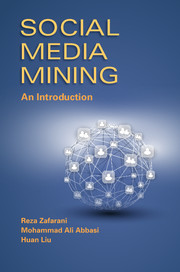4 - Network Models
from Part I - Essentials
Published online by Cambridge University Press: 05 July 2014
Summary
In May 2011, Facebook had 721 million users, represented by a graph of 721 million nodes. A Facebook user at the time had an average of 190 friends; that is, all Facebook users, taken into account, had a total of 68.5 billion friendships (i.e., edges). What are the principal underlying processes that help initiate these friendships? More importantly, how can these seemingly independent friendships form this complex friendship network?
In social media, many social networks contain millions of nodes and billions of edges. These complex networks have billions of friendships, the reasons for existence of most of which are obscure. Humbled by the complexity of these networks and the difficulty of independently analyzing each one of these friendships, we can design models that generate, on a smaller scale, graphs similar to real-world networks. On the assumption that these models simulate properties observed in real-world networks well, the analysis of real-world networks boils down to a cost-efficient measuring of different properties of simulated networks. In addition, these models
• allow for a better understanding of phenomena observed in real-world networks by providing concrete mathematical explanations and
• allow for controlled experiments on synthetic networks when real-world networks are not available.
We discuss three principal network models in this chapter: the random graph model, the small-world model, and the preferential attachment model. These models are designed to accurately model properties observed in real-world networks. Before we delve into the details of these models, we discuss their properties.
- Type
- Chapter
- Information
- Social Media MiningAn Introduction, pp. 80 - 104Publisher: Cambridge University PressPrint publication year: 2014



